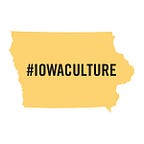Elevating the Unique Heritage of Blood Run National Historic Landmark
Written by Jen Bancescu, State Historic Sites Manager, State Historical Society of Iowa
This post is part of a week-long series from the State Historic Preservation Office of Iowa in honor of #Preservation50, commemorating the 50th anniversary of the National Historic Preservation Act.
The Blood Run National Historic Landmark was designated in 1970. It is the largest known and most complex site of the Oneota tradition, which was practiced here by the Omaha/Ponca, Ioway and Otoe Tribes from about A.D. 1500 until shortly before 1714. Still dotting the landscape today are numerous earthen mounds that they constructed. Below ground is a well-preserved archaeological record that tracks changes in village social organization, diet, economic patterns, trade, and ceremonial practices in the form of ceramic, stone, bone, antler, shell, and metal items, food remains, and numerous elaborately decorated catlinite pipes and tablets and the byproducts of their manufacture. Subsurface features include human interments (burials), mound foundations, habitation remnants, hearths, and storage pits. The site was visited by earlier groups extending back to the Middle Archaic (ca. 6500– 4500 BP).
Currently, the State of Iowa is working to develop a Cultural Landscape Master Plan for the Blood Run National Historic Landmark in Northwestern Iowa. This Master Plan will help the state move forward in a way that will respect, preserve, protect, and emphasize the unique heritage of the study area; foster appreciation of the regional Native American culture, local history, the current community, and natural resources; and foster understanding, use, and enjoyment through education, interpretation, and compatible recreation. The documentation and evaluation of the landscape have been undertaken using a cultural landscape approach in accordance with National Park Service guidelines.
The Blood Run site extends into both Iowa and South Dakota. Currently, the two states are working together on a bi-state park initiative that will promote the preservation and education of the site as a whole. In Iowa, the Cultural Landscape Master Plan has been a collaborative process between the Iowa Department of Natural Resources and Iowa Department of Cultural Affairs. The Native American Tribes that serve as primary contact for the master plan are the Ponca Tribe of Nebraska, Iowa Tribe of Kansas and Nebraska, Iowa Tribe of Oklahoma, Omaha Tribe of Nebraska, Otoe-Missouria Tribe, and the Ponca Tribe of Oklahoma. Local partners include Keep Iowa Beautiful, the Lyon County Historical Society, Iowa Natural Heritage Foundation, Lyon County Economic Development, Preservation Iowa and Western Iowa Tourism. Our State partners include the State Historical Society of Iowa Board of Trustees, South Dakota State Parks, South Dakota Historical Society, National Park Service and the Iowa Office of the State Archaeologist and its Indian Advisory Council.
The Cultural Landscape Master Planning effort will conclude in July of 2016, but the efforts will continue in order to implement this plan over the coming years. The State of Iowa looks forward to the continued collaboration with all of its partners to protect this unique National Historic Landmark and educate future generations about its importance.
